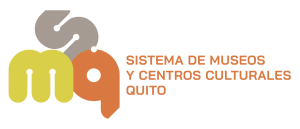[et_pb_section fb_built=»1″ admin_label=»Hero Section» _builder_version=»4.24.3″ use_background_color_gradient=»on» background_color_gradient_direction=»120deg» background_color_gradient_stops=»#000000 0%|rgba(0,0,0,0) 100%» background_color_gradient_overlays_image=»on» background_color_gradient_start=»#000000″ background_color_gradient_end=»rgba(0,0,0,0)» background_image=»https://www.museosquito.gob.ec/wp-content/uploads/2024/05/20140818_Bothrops_asper_36.jpg» custom_padding=»10%||10%|» global_colors_info=»{}»][et_pb_row column_structure=»3_5,2_5″ admin_label=»Hero Area» _builder_version=»4.16″ global_colors_info=»{}»][et_pb_column type=»3_5″ _builder_version=»4.16″ custom_padding=»|||» global_colors_info=»{}» custom_padding__hover=»|||»][et_pb_text admin_label=»Title» _builder_version=»4.24.3″ text_font=»||||||||» header_font=»Montserrat|600|||||||» header_font_size=»60px» header_line_height=»1.2em» background_layout=»dark» animation_style=»fade» header_font_size_tablet=»» header_font_size_phone=»30px» header_font_size_last_edited=»on|phone» global_colors_info=»{}»]
Vivarium de
Quito
[/et_pb_text][et_pb_text admin_label=»Subtitle» _builder_version=»4.24.3″ text_font=»Poppins||||||||» text_font_size=»18px» text_line_height=»1.8em» header_font=»||||||||» header_6_font=»Montserrat||||||||» background_layout=»dark» custom_margin=»|||» custom_padding=»|||» animation_style=»fade» inline_fonts=»Montserrat» global_colors_info=»{}»]
Dirección: Av. Amazonas N34-12 y Rumipamba
(Al interior del Parque La Carolina)
Teléfono: (593) 2 271 799 / 099 892 6595
Horarios: : martes a domingo de 09h30 a 13h00
(último ingreso 12h15) y de 13h30 a 17h30
(último ingreso 16:45).
[/et_pb_text][/et_pb_column][et_pb_column type=»2_5″ _builder_version=»4.16″ custom_padding=»|||» global_colors_info=»{}» custom_padding__hover=»|||»][et_pb_image src=»https://www.museosquito.gob.ec/wp-content/uploads/2024/05/vivarium.png» title_text=»vivarium» align=»right» _builder_version=»4.24.3″ _module_preset=»default» width=»50%» global_colors_info=»{}» custom_padding=»|||0px||» custom_margin=»||28px|||»][/et_pb_image][et_pb_text _builder_version=»4.24.3″ _module_preset=»default» header_6_font=»Montserrat||||||||» header_6_font_size=»11px» global_colors_info=»{}»]
Fotografía © Pete Oxford
[/et_pb_text][/et_pb_column][/et_pb_row][/et_pb_section][et_pb_section fb_built=»1″ admin_label=»About Section» _builder_version=»4.16″ custom_padding=»0px||0px|» global_colors_info=»{}»][et_pb_row column_structure=»3_5,2_5″ use_custom_gutter=»on» gutter_width=»0″ make_equal=»on» admin_label=»About Area» _builder_version=»4.16″ width=»100%» max_width=»100%» custom_padding=»0px||0px|» use_custom_width=»on» width_unit=»off» custom_width_percent=»100%» global_colors_info=»{}»][et_pb_column type=»3_5″ _builder_version=»4.16″ background_color=»#1e1d1c» custom_padding=»10%|5%|10%|5%» global_colors_info=»{}» custom_padding__hover=»|||»][et_pb_text admin_label=»Title» _builder_version=»4.24.3″ text_font=»||||||||» header_font=»||||||||» header_2_font=»Montserrat|600|||||||» header_2_text_align=»center» header_2_font_size=»36px» header_2_line_height=»1.2em» text_orientation=»center» background_layout=»dark» max_width=»550px» module_alignment=»center» custom_margin=»||0px|» custom_padding=»|||» animation_style=»fade» animation_direction=»top» global_colors_info=»{}»]
Acerca de
[/et_pb_text][et_pb_divider color=»#fdb467″ divider_position=»center» divider_weight=»3px» _builder_version=»4.16″ max_width=»50px» module_alignment=»center» animation_style=»slide» animation_direction=»top» animation_intensity_slide=»10%» animation_starting_opacity=»100%» global_colors_info=»{}»][/et_pb_divider][et_pb_text _builder_version=»4.24.3″ text_font=»Montserrat||||||||» text_text_color=»rgba(255,255,255,0.7)» text_font_size=»15px» text_line_height=»1.8em» header_5_font=»Montserrat||||||||» header_5_line_height=»1.2em» text_orientation=»center» max_width=»570px» module_alignment=»center» custom_margin=»25px|||» animation_style=»fade» inline_fonts=»Montserrat» global_colors_info=»{}»]
El Vivarium de Quito es el proyecto educativo emblemático de la Fundación Herpetológica Gustavo Orcés. Es un centro especializado en el manejo de anfibios y reptiles bajo cuidado humano. Nace en el año 1989 como una necesidad, debido al poco conocimiento existente sobre la fauna de reptiles y anfibios, y debido además al temor injustificado que estos animales han inspirado en el hombre desde épocas antiguas.
Actualmente se ha convertido en un sitio turístico visitado por turistas nacionales y extranjeros. Es una herramienta indispensable en el estudio de este grupo de animales dentro del currículum estudiantil en las materias de Ciencias Naturales, Biología, Zoología, Educación Ambiental, entre otras.
El programa de educación ambiental que hemos implementado tiene como principal objetivo crear conciencia ambiental para lograr participantes activos en la conservación de nuestra biodiversidad. Es manejado por el área educativa de la Institución y cuenta con personal capacitado y formado para la atención de estudiantes, maestros y público en general.
Su principal herramienta es la exhibición pública de anfibios y reptiles; que cuenta con exhibidores de 40 especies diferentes. Esta colección mantiene ejemplares de los grupos:
-
Anfibios: ranas, sapos, salamandras.
-
Reptiles: ofidios (serpientes venenosas y no venenosas), saurios (lagartijas, geckos e iguanas), y quelonios (tortugas acuáticas, semiacuáticas y terrestres).
Los animales mantenidos en el área de exhibición se encuentran perfectamente aclimatados y acondicionados en terrarios y acuaterrarios.
[/et_pb_text][/et_pb_column][et_pb_column type=»2_5″ _builder_version=»4.16″ background_color=»#282624″ custom_padding=»10%|5%|10%|5%» global_colors_info=»{}» custom_padding__hover=»|||»][et_pb_text admin_label=»Title» _builder_version=»4.24.3″ text_font=»||||||||» header_font=»||||||||» header_2_font=»Montserrat|600|||||||» header_2_text_align=»center» header_2_font_size=»36px» header_2_line_height=»1.2em» text_orientation=»center» background_layout=»dark» max_width=»550px» module_alignment=»center» custom_margin=»||0px|» custom_padding=»|||» animation_style=»fade» locked=»off» global_colors_info=»{}»]
TARIFAS
[/et_pb_text][et_pb_divider color=»#fdb467″ divider_position=»center» divider_weight=»3px» _builder_version=»4.16″ max_width=»50px» module_alignment=»center» animation_style=»slide» animation_direction=»top» animation_intensity_slide=»10%» animation_starting_opacity=»100%» locked=»off» global_colors_info=»{}»][/et_pb_divider][et_pb_text _builder_version=»4.24.3″ text_font=»Poppins||||||||» text_text_color=»rgba(255,255,255,0.7)» text_font_size=»18px» text_line_height=»1.8em» link_font=»||||on|||rgba(253,180,103,0.5)|dotted» link_text_color=»rgba(255,255,255,0.7)» ul_font=»||||||||» header_font=»||||||||» header_2_font=»||||||||» header_4_font=»Montserrat||||||||» header_4_font_size=»15px» text_orientation=»center» max_width=»570px» module_alignment=»center» custom_margin=»25px|||» custom_padding=»|||» animation_style=»fade» locked=»off» inline_fonts=»Montserrat» global_colors_info=»{}»]
Adultos (de 13 a 64 años)
$4 dólares
Niños y niñas (de 3 a 12 años)
$2.50 dólares
Menores de 3 años
Ingreso gratuito
Adultos mayores (desde 65 años)
y personas con discapacidad
$1.75 dólares presentando cédula
o carné del Conadis.
[/et_pb_text][/et_pb_column][/et_pb_row][/et_pb_section][et_pb_section fb_built=»1″ admin_label=»Workshops and Events Section» _builder_version=»4.16″ custom_padding=»0px||0px|» global_colors_info=»{}»][et_pb_row column_structure=»1_3,2_3″ use_custom_gutter=»on» gutter_width=»0″ make_equal=»on» admin_label=»Workshops and Events Area» module_class=» et_pb_row_fullwidth» _builder_version=»4.24.3″ width=»100%» width_tablet=»100%» width_phone=»100%» width_last_edited=»on|desktop» max_width=»100%» max_width_tablet=»100%» max_width_phone=»100%» max_width_last_edited=»on|desktop» custom_margin=»|||» custom_padding=»0px||0px|» make_fullwidth=»on» global_colors_info=»{}»][et_pb_column type=»1_3″ _builder_version=»4.24.3″ background_color=»#eaeaea» custom_padding=»10%|5%|10%|5%» global_colors_info=»{}» custom_padding__hover=»|||»][et_pb_text admin_label=»Title» _builder_version=»4.16″ header_font=»||||||||» header_2_font=»Poppins|600|||||||» header_2_font_size=»36px» header_2_line_height=»1.2em» animation_style=»fold» animation_direction=»left» animation_intensity_fold=»10%» animation_starting_opacity=»100%» global_colors_info=»{}»]
Contacto
[/et_pb_text][et_pb_divider color=»#fdb467″ divider_position=»center» divider_weight=»3px» _builder_version=»4.16″ max_width=»50px» module_alignment=»left» animation_style=»slide» animation_direction=»top» animation_intensity_slide=»10%» animation_starting_opacity=»100%» locked=»off» global_colors_info=»{}»][/et_pb_divider][et_pb_text _builder_version=»4.24.3″ text_font=»Montserrat||||||||» text_text_color=»#666666″ text_font_size=»15px» text_line_height=»1.8em» custom_margin=»25px|||» animation_style=»fold» animation_direction=»left» animation_intensity_fold=»10%» animation_starting_opacity=»100%» global_colors_info=»{}»]
Correo electrónico
vivariumquito@gmail.com
Whatsapp
099 892 6595
Página web
https://vivarium.org.ec/
[/et_pb_text][/et_pb_column][et_pb_column type=»2_3″ _builder_version=»4.24.3″ background_image=»https://www.museosquito.gob.ec/wp-content/uploads/2024/05/vivarium02.png» background_repeat=»repeat» custom_padding=»|||» global_colors_info=»{}» custom_padding__hover=»|||»][et_pb_divider show_divider=»off» _builder_version=»4.16″ height=»400px» locked=»off» global_colors_info=»{}»][/et_pb_divider][/et_pb_column][/et_pb_row][/et_pb_section][et_pb_section fb_built=»1″ admin_label=»Divider Section» _builder_version=»4.16″ background_color=»#1e1d1c» min_height=»63px» custom_margin=»-2px||-54px|||» custom_padding=»2px||21px|||» global_colors_info=»{}»][et_pb_row column_structure=»1_6,1_6,1_6,1_6,1_6,1_6″ _builder_version=»4.24.3″ _module_preset=»default» global_colors_info=»{}»][et_pb_column type=»1_6″ _builder_version=»4.24.3″ _module_preset=»default» global_colors_info=»{}»][et_pb_image src=»https://www.museosquito.gob.ec/wp-content/uploads/2024/04/facebook-1.png» title_text=»facebook» url=»https://www.facebook.com/vivariumquito?mibextid=ZbWKwL» align=»center» _builder_version=»4.24.3″ _module_preset=»default» global_colors_info=»{}»][/et_pb_image][/et_pb_column][et_pb_column type=»1_6″ _builder_version=»4.24.3″ _module_preset=»default» global_colors_info=»{}»][et_pb_image src=»https://www.museosquito.gob.ec/wp-content/uploads/2024/04/instagram.png» title_text=»instagram» url=»https://www.instagram.com/vivariumquito?igsh=b2V0azdneTBoNnZ4″ align=»center» _builder_version=»4.24.3″ _module_preset=»default» global_colors_info=»{}»][/et_pb_image][/et_pb_column][et_pb_column type=»1_6″ _builder_version=»4.24.3″ _module_preset=»default» global_colors_info=»{}»][/et_pb_column][et_pb_column type=»1_6″ _builder_version=»4.24.3″ _module_preset=»default» global_colors_info=»{}»][/et_pb_column][et_pb_column type=»1_6″ _builder_version=»4.24.3″ _module_preset=»default» global_colors_info=»{}»][/et_pb_column][et_pb_column type=»1_6″ _builder_version=»4.24.3″ _module_preset=»default» global_colors_info=»{}»][/et_pb_column][/et_pb_row][/et_pb_section]

